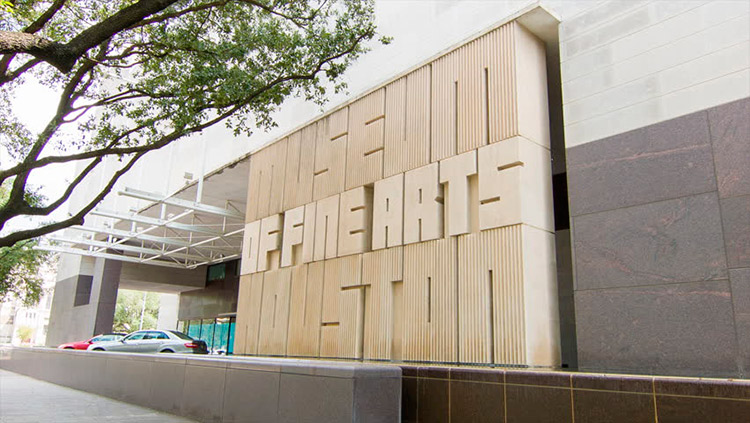175 masterpieces by well-known figures such as
Frida Kahlo, José Clemente Orozco, Diego Rivera, and
David Alfaro Siqueiros, as well as important contemporaries
June 25 to October 1, 2017
The MUSEUM OF FINE ARTS, HOUSTON
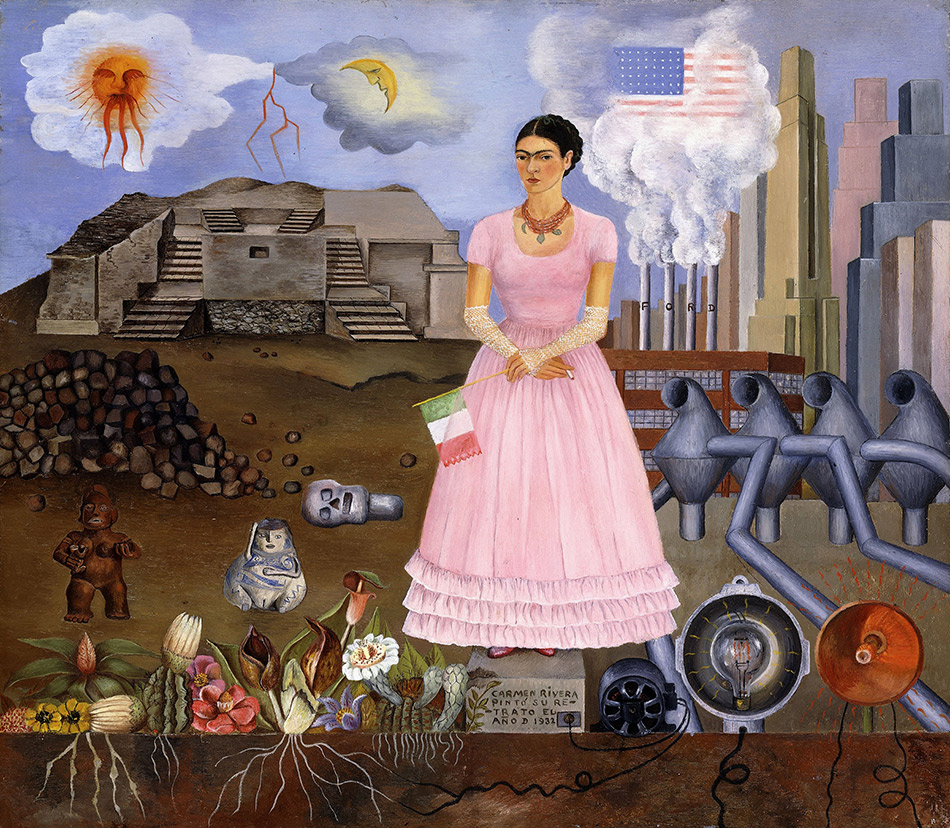 Frida Kahlo, “Self-Portrait on the Border Line between Mexico and the United States”, 1932, oil on metal, collection of María and Manuel Reyero, New York. © 2017 Banco de México Diego Rivera Frida Kahlo Museums Trust, Mexico D. F. / Artists Rights Society (ARS), New York.
Frida Kahlo, “Self-Portrait on the Border Line between Mexico and the United States”, 1932, oil on metal, collection of María and Manuel Reyero, New York. © 2017 Banco de México Diego Rivera Frida Kahlo Museums Trust, Mexico D. F. / Artists Rights Society (ARS), New York.
An exhibition that charts the development of Modern art in Mexico and the social, political, and cultural forces that shaped it over the course of nearly half a century, including easel paintings, large-scale portable murals and mural fragments, prints, photographs, books, newspapers, and broadsheet. Paint the Revolution is unprecedented for its breadth and the variety of visual materials on display.
Exhibition Highlights
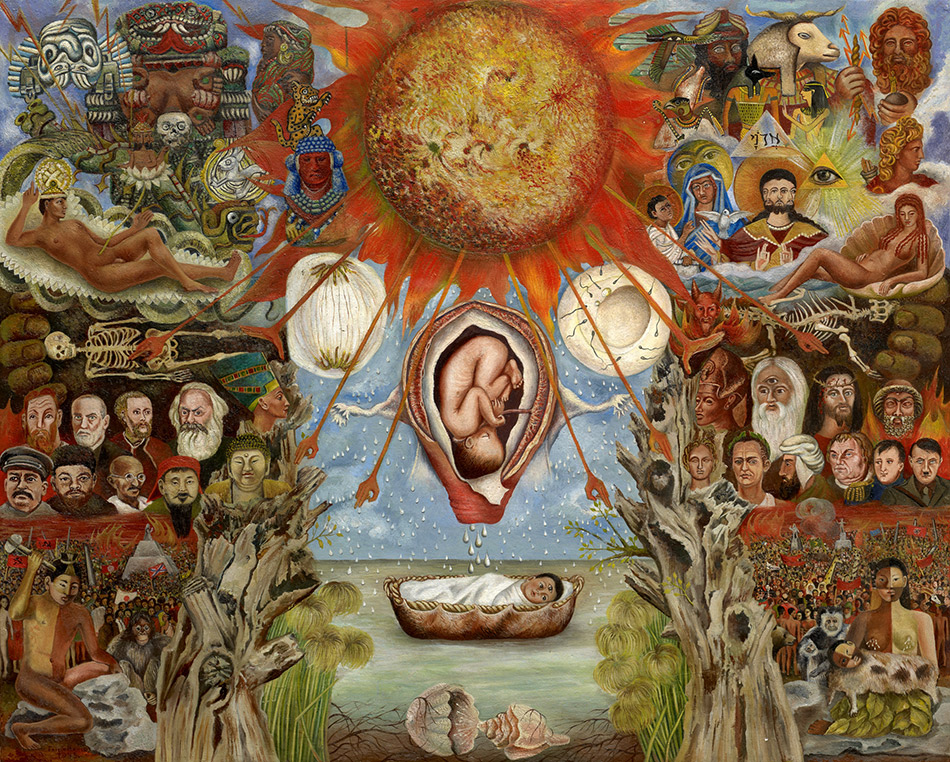 Frida Kahlo, “Moses”, 1945, oil on Masonite, private collection, Houston. © 2017 Banco de México Diego Rivera Frida Kahlo Museums Trust, Mexico D. F. / Artists Rights Society (ARS), New York
Frida Kahlo, “Moses”, 1945, oil on Masonite, private collection, Houston. © 2017 Banco de México Diego Rivera Frida Kahlo Museums Trust, Mexico D. F. / Artists Rights Society (ARS), New York
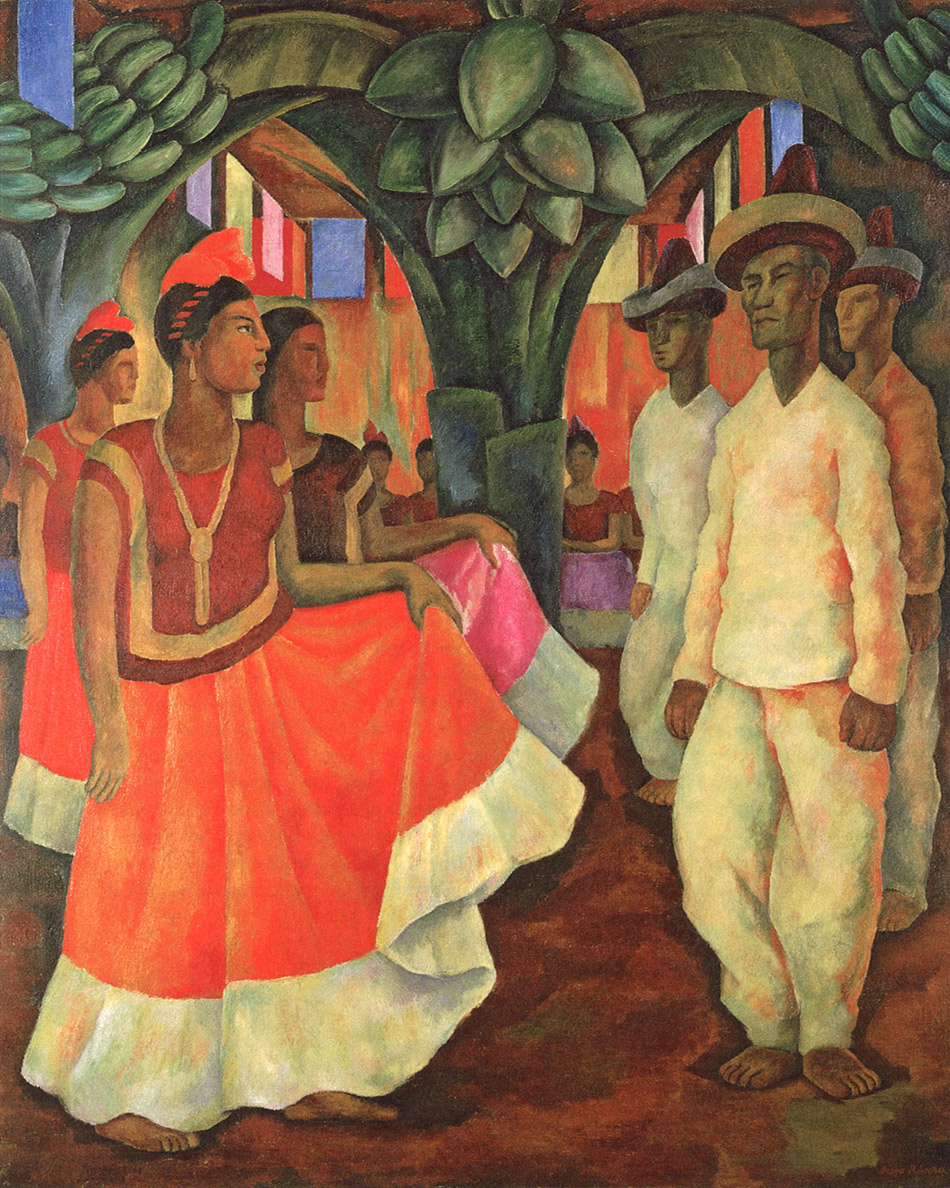 Diego Rivera, “Dance in Tehuantepec”, 1928, oil on canvas, collection of Eduardo F. Costantini, Buenos Aires. © 2017 Banco de México Diego Rivera Frida Kahlo Museums Trust, Mexico D. F. / Artists Rights Society (ARS), New York
Diego Rivera, “Dance in Tehuantepec”, 1928, oil on canvas, collection of Eduardo F. Costantini, Buenos Aires. © 2017 Banco de México Diego Rivera Frida Kahlo Museums Trust, Mexico D. F. / Artists Rights Society (ARS), New York
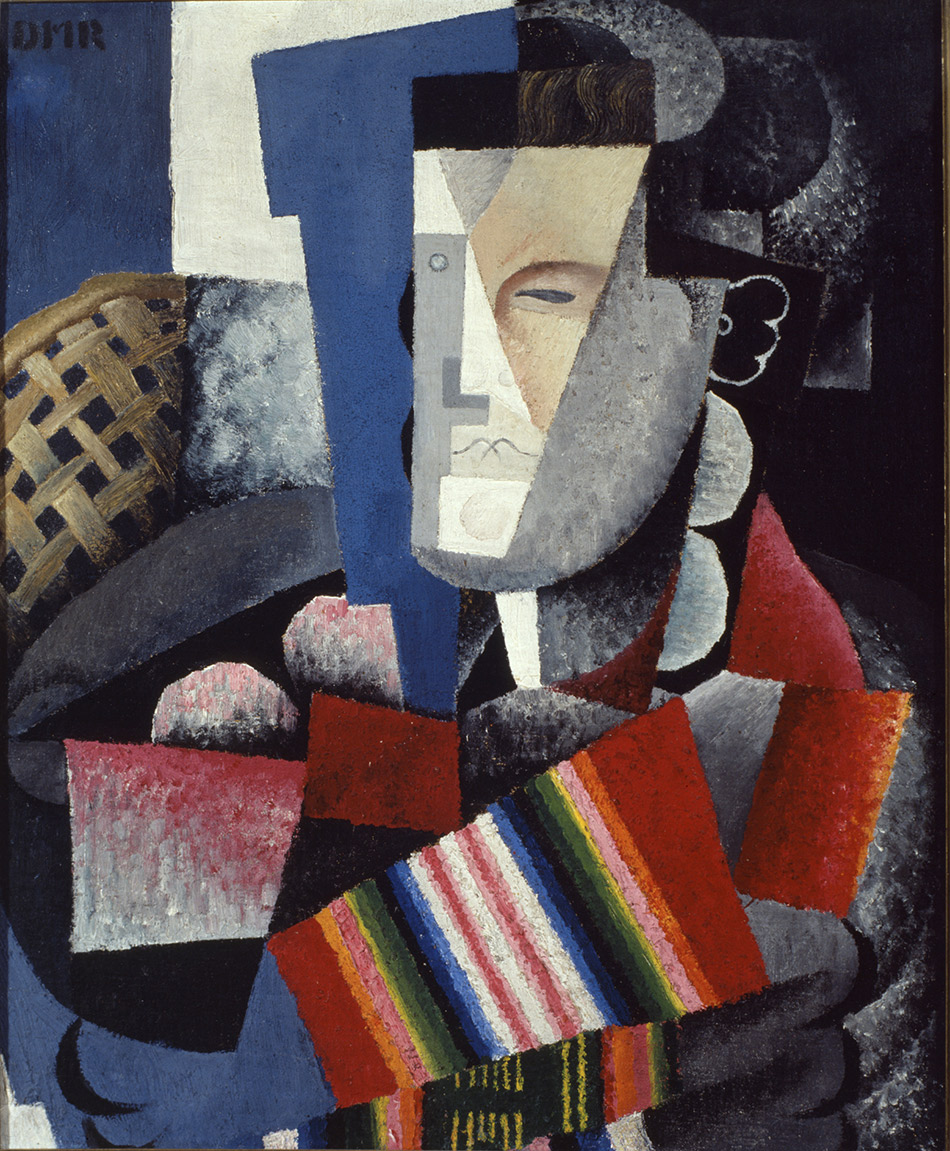 Diego Rivera, “Portrait of Martín Luis Guzmán”, 1915, oil on canvas, Fundación Televisa Collection and Archive. © 2017 Banco de México Diego Rivera Frida Kahlo Museums Trust, Mexico D. F. / Artists Rights Society (ARS), New York
Diego Rivera, “Portrait of Martín Luis Guzmán”, 1915, oil on canvas, Fundación Televisa Collection and Archive. © 2017 Banco de México Diego Rivera Frida Kahlo Museums Trust, Mexico D. F. / Artists Rights Society (ARS), New York
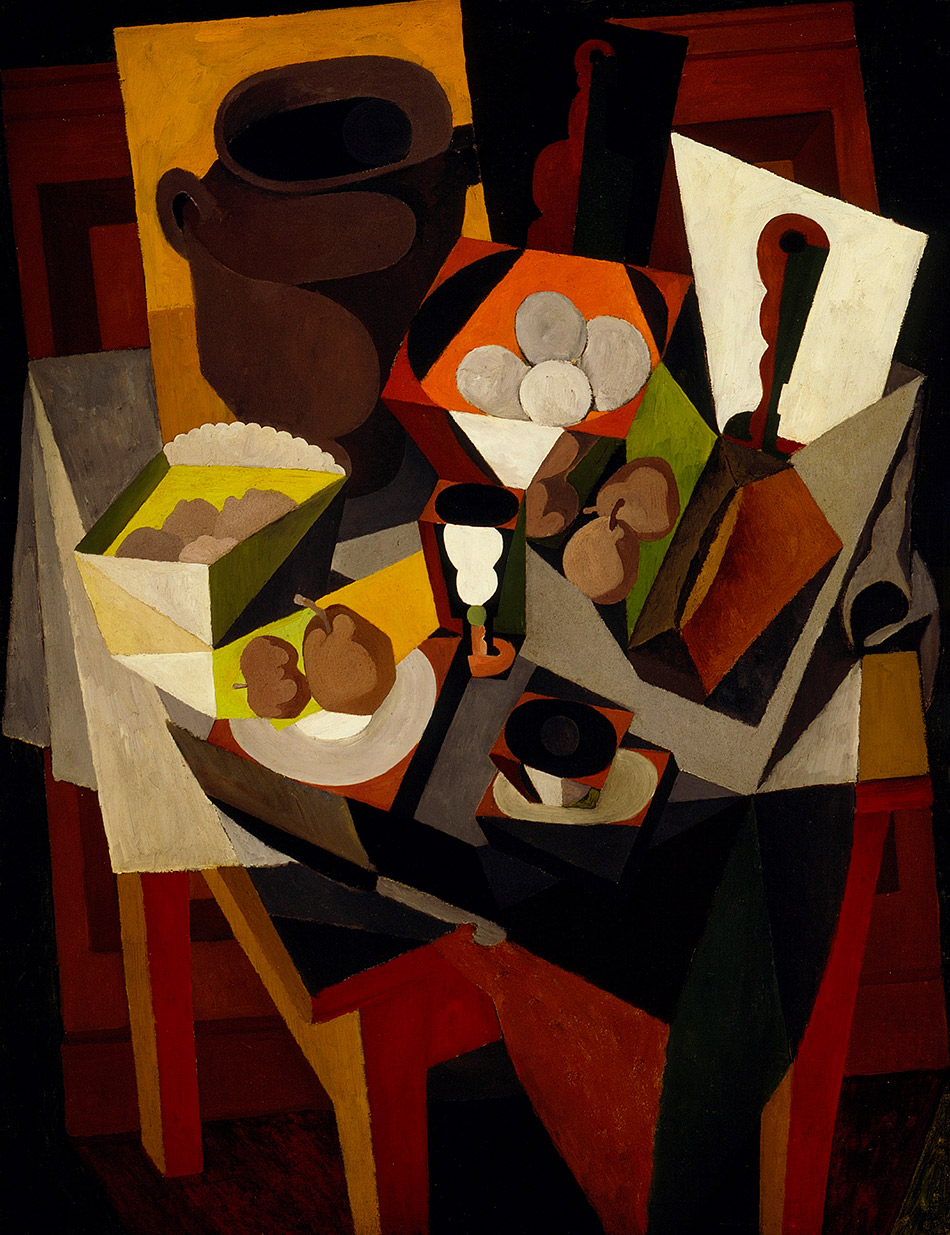 Diego Rivera, “Still Life with Bread and Fruit”, 1917, oil on canvas, Los Angeles County Museum of Art, gift of Morton D. May. © 2017 Banco de México Diego Rivera Frida Kahlo Museums Trust, Mexico D. F. / Artists Rights Society (ARS), New York
Diego Rivera, “Still Life with Bread and Fruit”, 1917, oil on canvas, Los Angeles County Museum of Art, gift of Morton D. May. © 2017 Banco de México Diego Rivera Frida Kahlo Museums Trust, Mexico D. F. / Artists Rights Society (ARS), New York
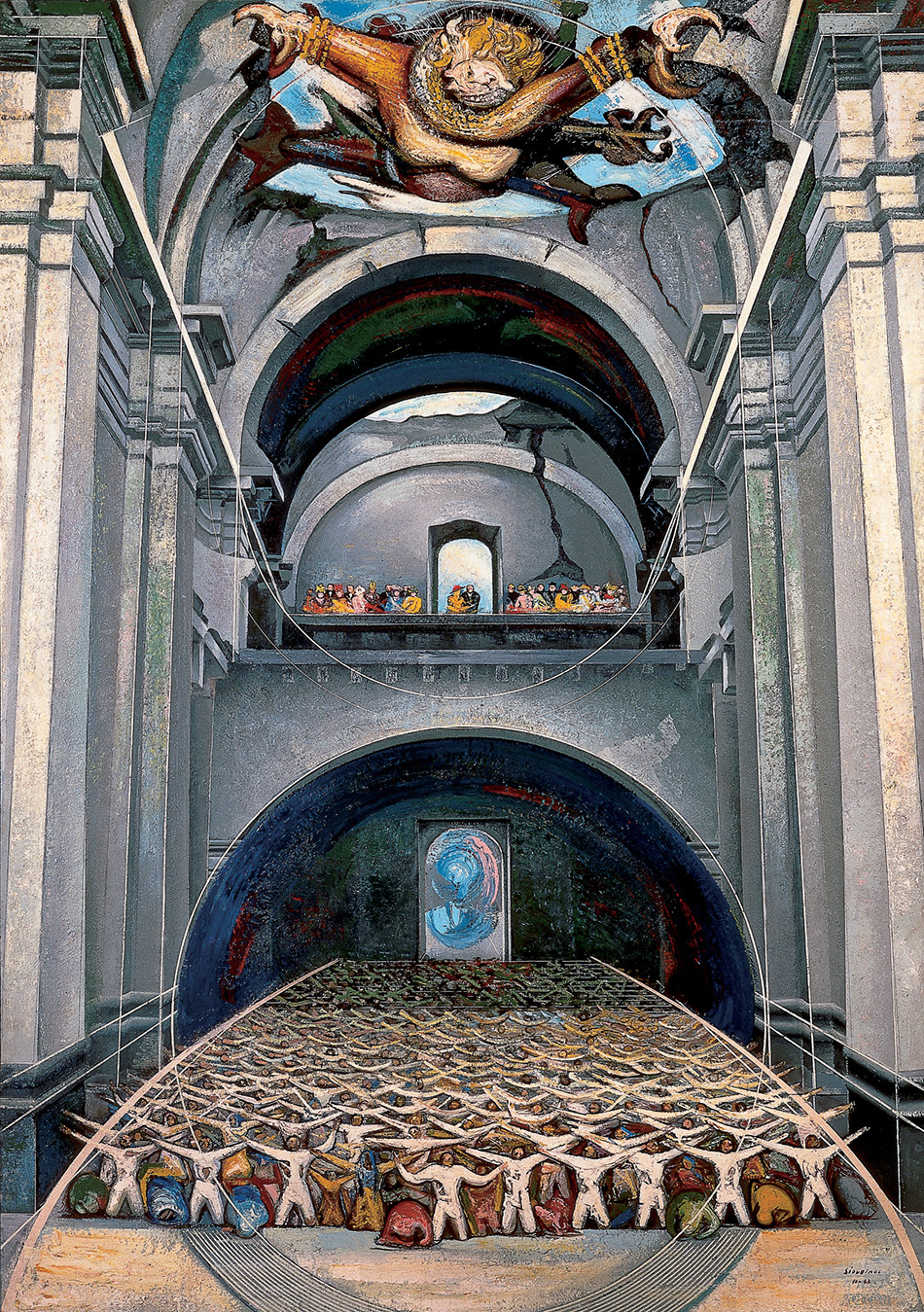 David Alfaro Siqueiros, “The Devil in the Church”, 1947, pyroxylin on celotex, Museo de Arte Moderno, INBA, Mexico City. © 2017 Artists Rights Society (ARS), New York / SOMAAP, Mexico City
David Alfaro Siqueiros, “The Devil in the Church”, 1947, pyroxylin on celotex, Museo de Arte Moderno, INBA, Mexico City. © 2017 Artists Rights Society (ARS), New York / SOMAAP, Mexico City
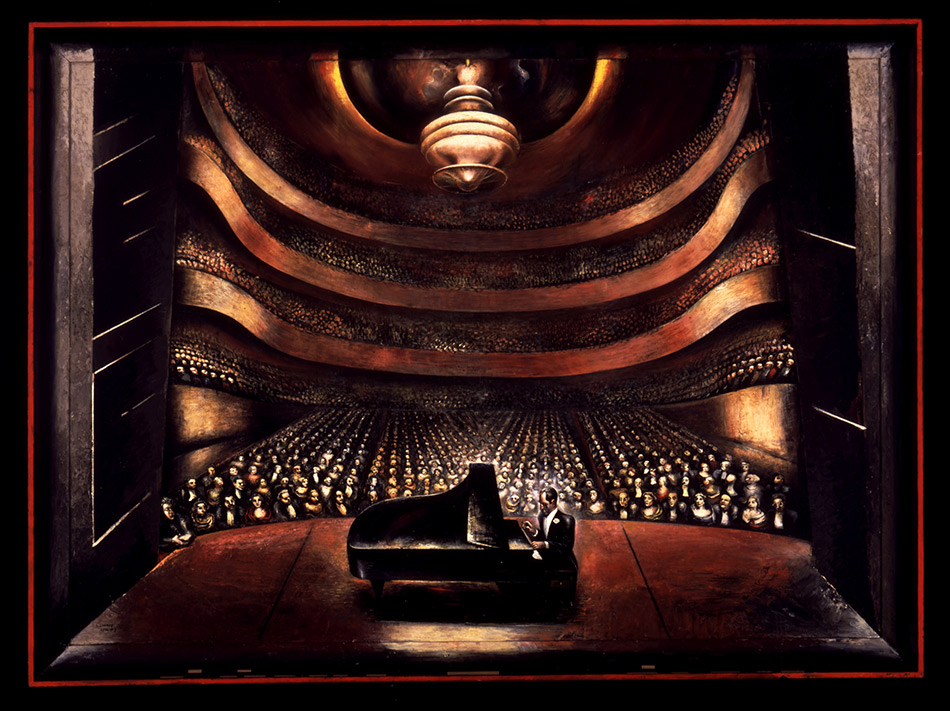 David Alfaro Siqueiros, “George Gershwin in a Concert Hall”, 1936, oil on canvas, Harry Ransom Center, University of Texas at Austin. © 2017 Artists Rights Society (ARS), New York / SOMAAP, Mexico City
David Alfaro Siqueiros, “George Gershwin in a Concert Hall”, 1936, oil on canvas, Harry Ransom Center, University of Texas at Austin. © 2017 Artists Rights Society (ARS), New York / SOMAAP, Mexico City
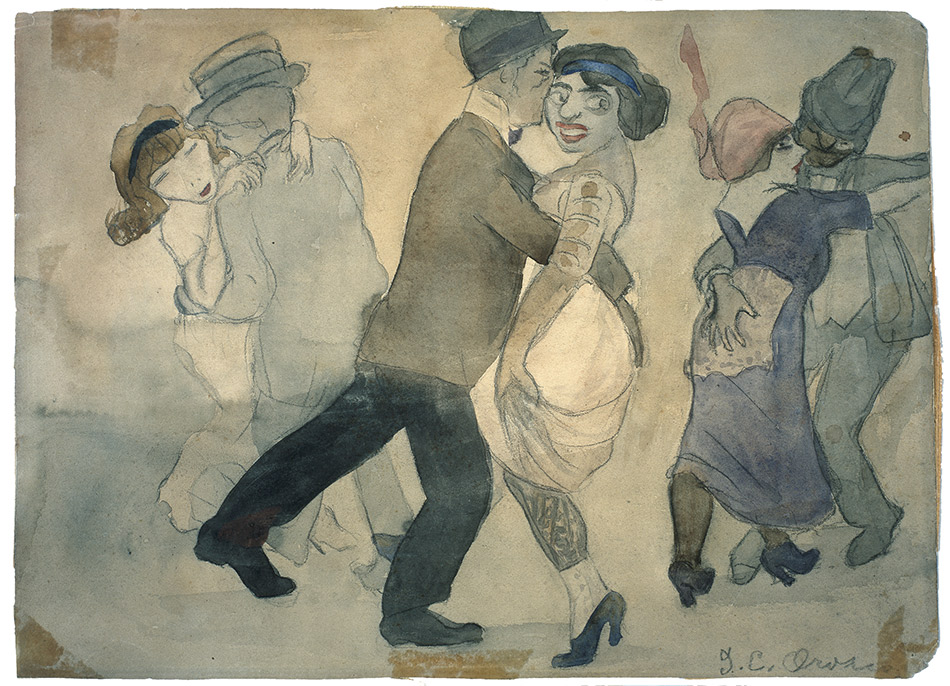 José Clemente Orozco, “The House of Tears: The Pimps’ Dance I,” 1913–15, watercolor on paper, Museo de Arte Carrillo Gil, Mexico City. © 2017 Artists Rights Society (ARS), New York / SOMAAP, Mexico City
José Clemente Orozco, “The House of Tears: The Pimps’ Dance I,” 1913–15, watercolor on paper, Museo de Arte Carrillo Gil, Mexico City. © 2017 Artists Rights Society (ARS), New York / SOMAAP, Mexico City
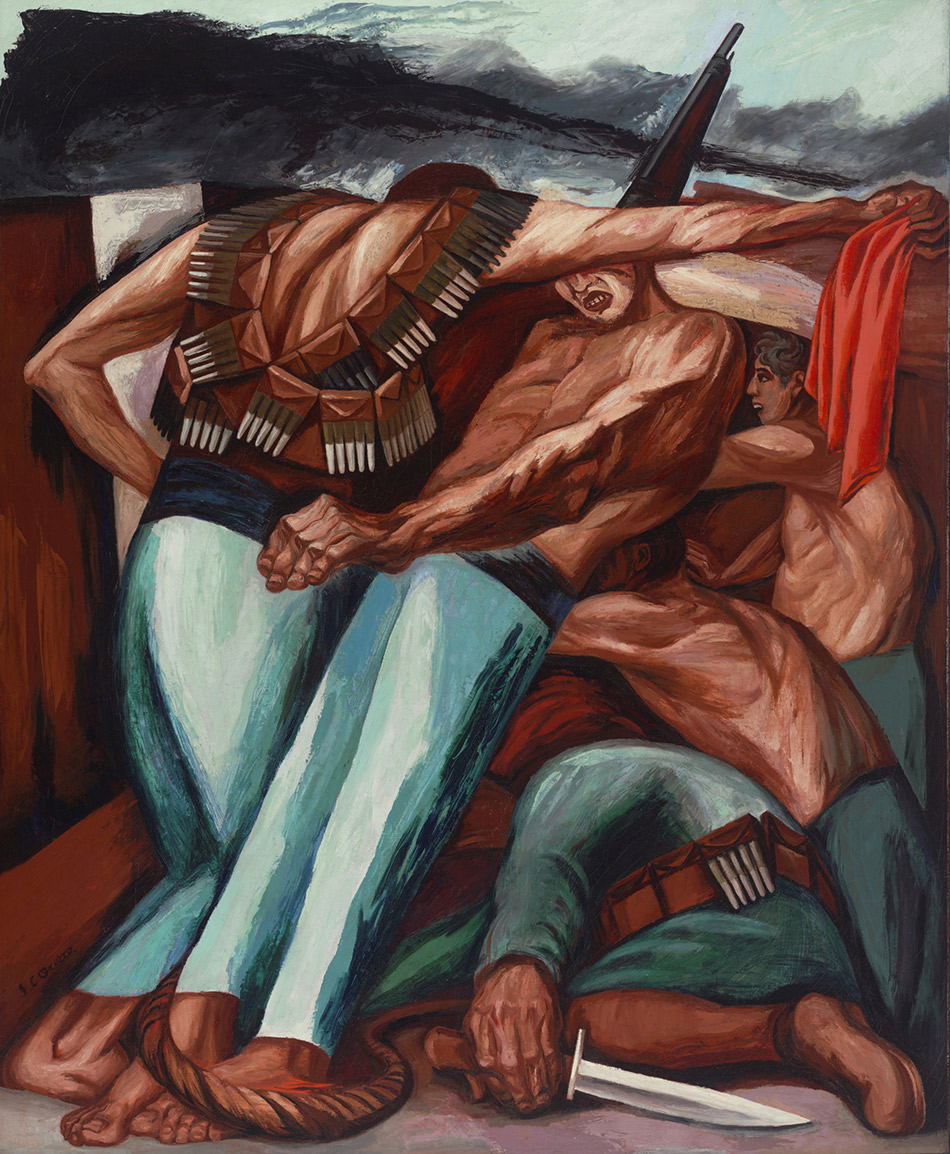 José Clemente Orozco, “Barricade”, 1931, oil on canvas, the Museum of Modern Art, New York, given anonymously. © 2017 Artists Rights Society (ARS), New York / SOMAAP, Mexico City
José Clemente Orozco, “Barricade”, 1931, oil on canvas, the Museum of Modern Art, New York, given anonymously. © 2017 Artists Rights Society (ARS), New York / SOMAAP, Mexico City
Beside “the three great ones” -Orozco, Rivera and Siqueiros- the exhibition presents other important contemporaries such as Dr. Atl (Gerardo Murillo), Manuel Álvarez Bravo, Miguel Covarrubias, Alfredo Ramos Martínez, Carlos Mérida, and Roberto Montenegro, among others. In addition, three historical murals by los tres grandes (“the three great ones”) are digitally re-created and projected in the galleries.
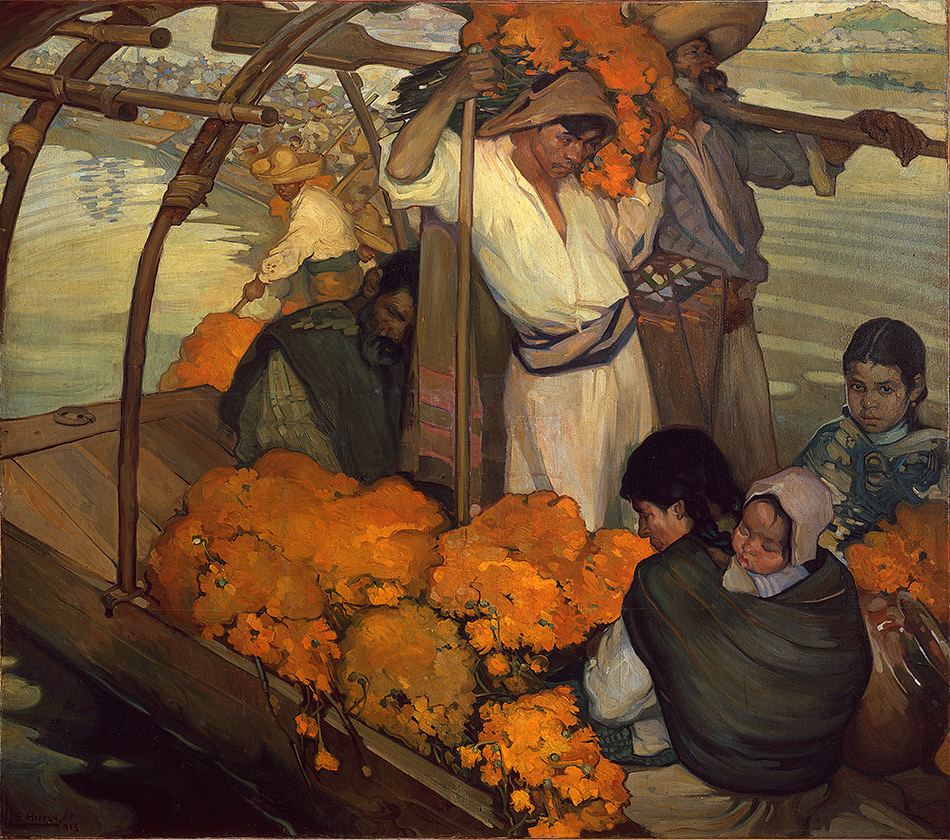 Saturnino Herrán, “The Offering”, 1913, oil on canvas, Museo Nacional de Arte, INBA, Mexico City.
Saturnino Herrán, “The Offering”, 1913, oil on canvas, Museo Nacional de Arte, INBA, Mexico City.
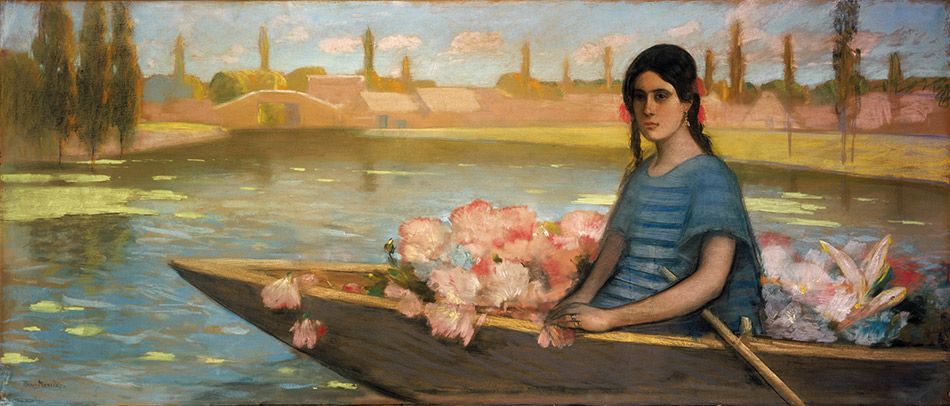
Alfredo Ramos Martínez, “Flower Seller”, c. 1916, pastel on paper on canvas, Pérez Simón Collection, Mexico City. © The Alfredo Ramos Martínez Research Project, LLC
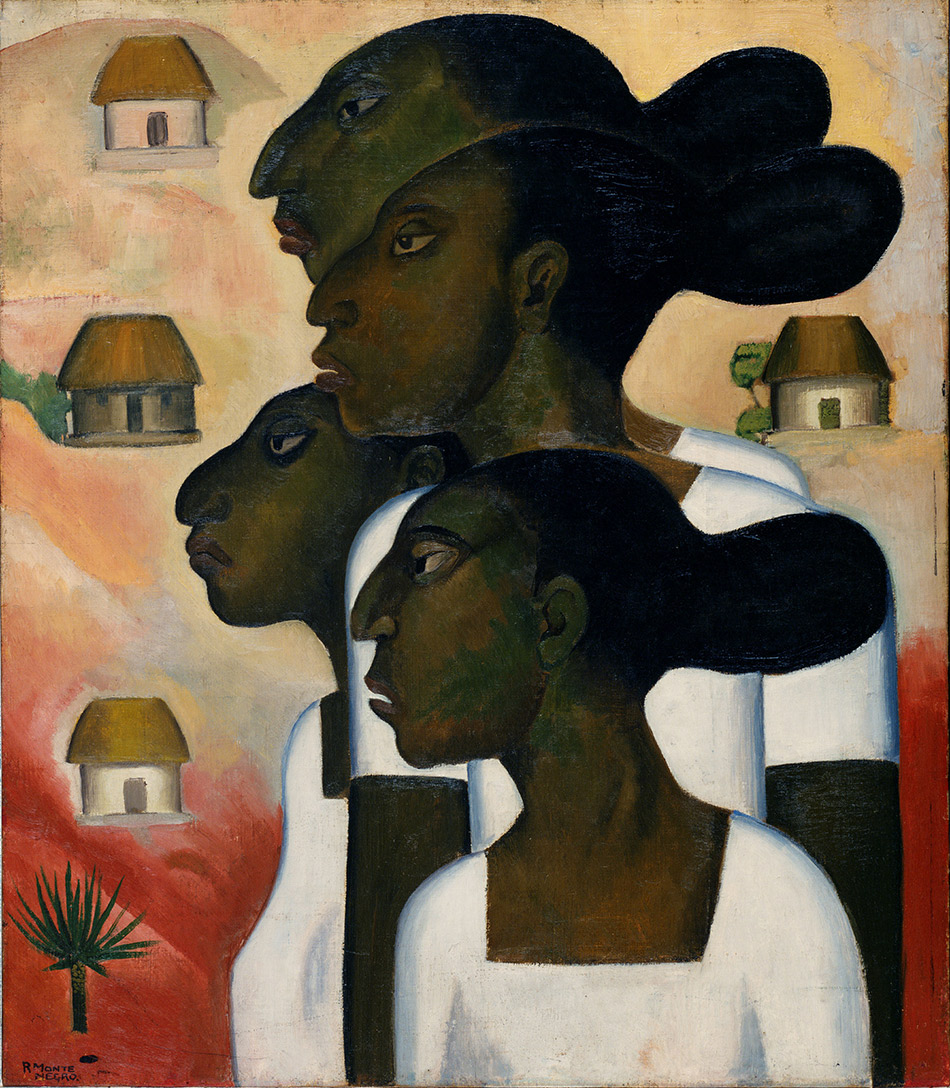 Roberto Montenegro, “Maya Women”, 1926, oil on canvas, Museum of Modern Art, New York, gift of Nelson A. Rockefeller. © 2017 Artists Rights Society (ARS), New York / SOMAAP, Mexico City
Roberto Montenegro, “Maya Women”, 1926, oil on canvas, Museum of Modern Art, New York, gift of Nelson A. Rockefeller. © 2017 Artists Rights Society (ARS), New York / SOMAAP, Mexico City
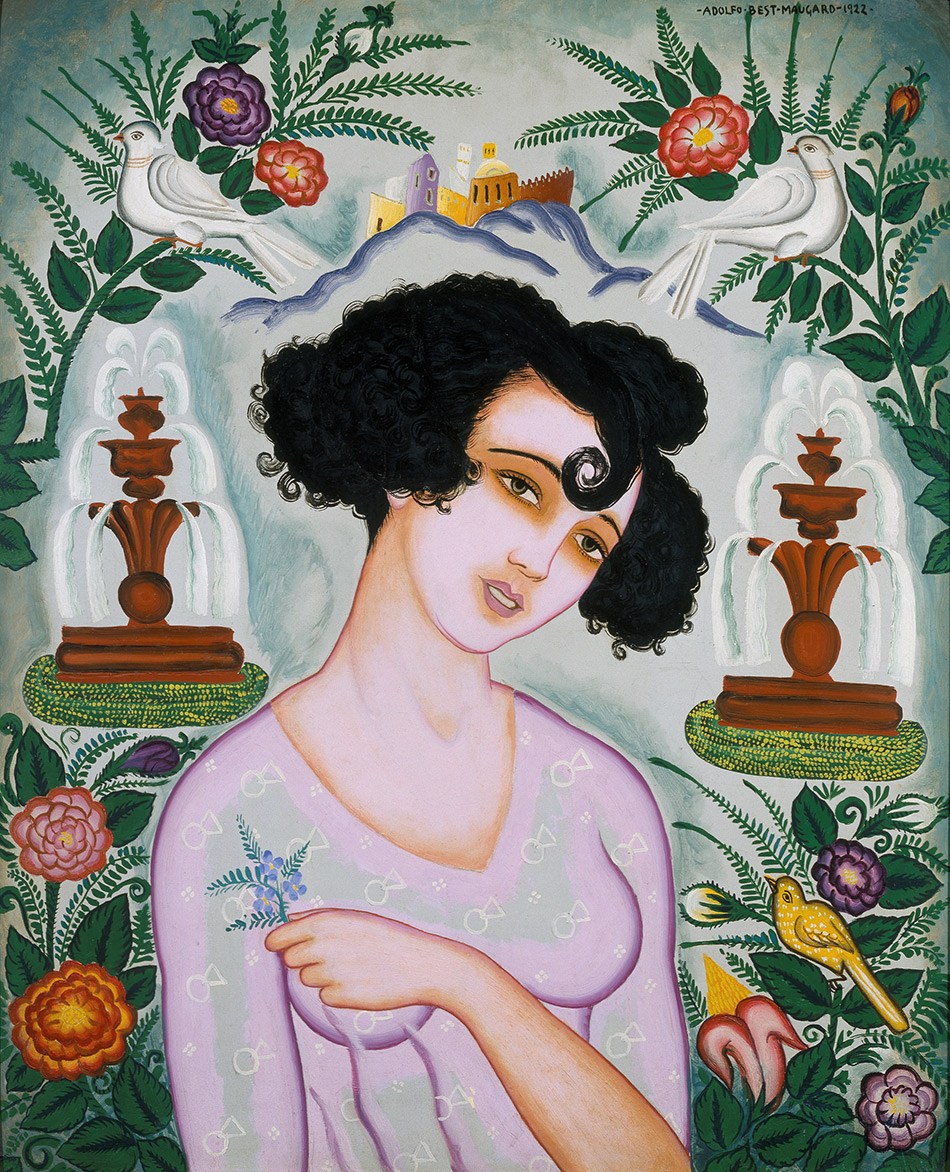 Adolfo Best Maugard, “The Powdered Woman”, 1922, oil on cardboard, collection of Lance Aaron and Family.
Adolfo Best Maugard, “The Powdered Woman”, 1922, oil on cardboard, collection of Lance Aaron and Family.
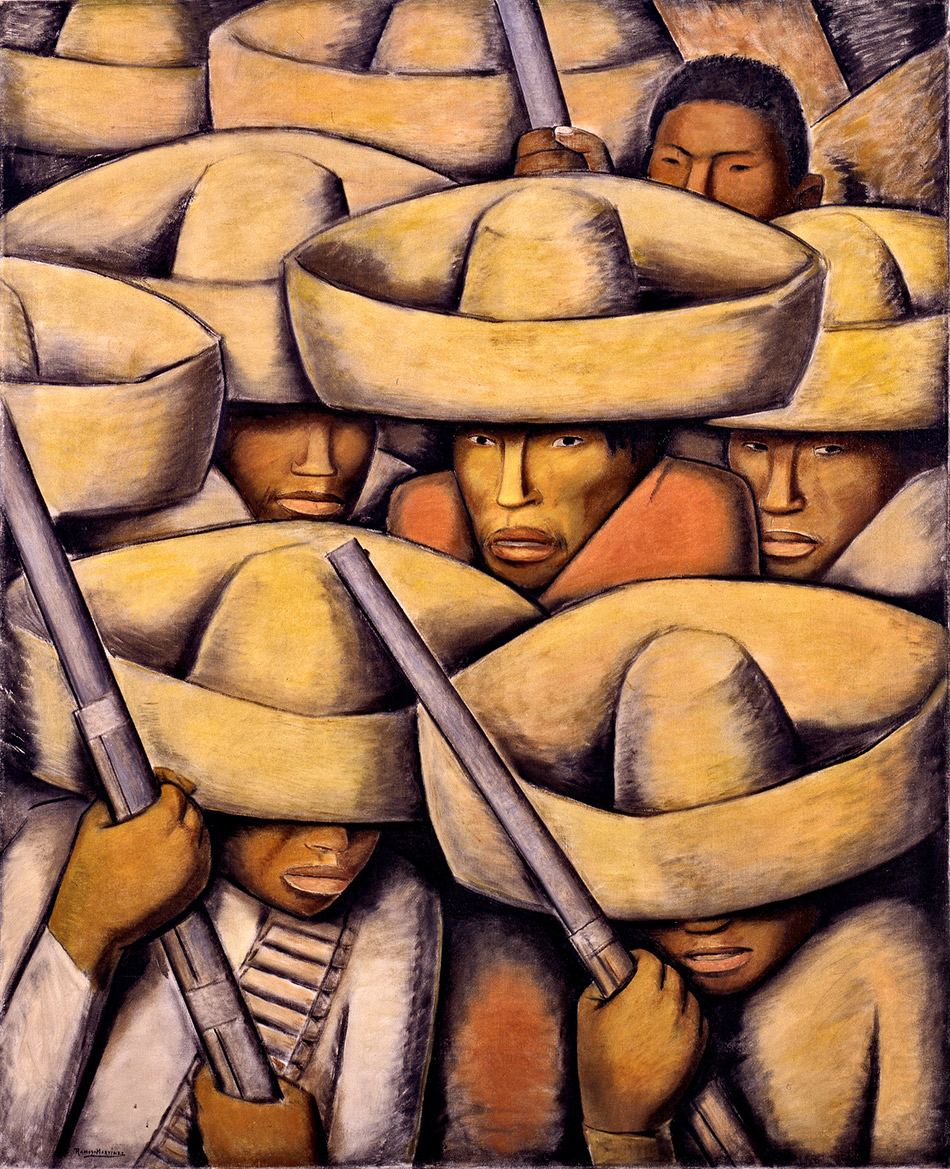 Alfredo Ramos Martínez, “Zapatistas”, c. 1932, oil on canvas, San Francisco Museum of Modern Art, Albert M. Bender Collection, gift of Albert M. Bender. © The Alfredo Ramos Martínez Research Project, LLC
Alfredo Ramos Martínez, “Zapatistas”, c. 1932, oil on canvas, San Francisco Museum of Modern Art, Albert M. Bender Collection, gift of Albert M. Bender. © The Alfredo Ramos Martínez Research Project, LLC
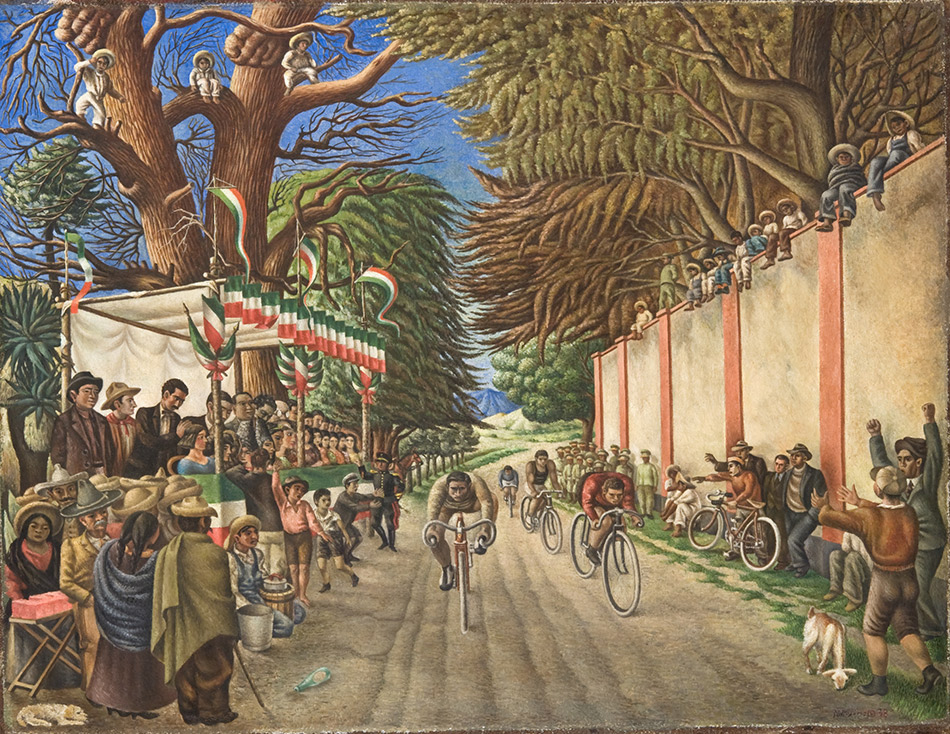 Antonio Ruiz, “Bicycle Race”, 1938, oil on canvas, Philadelphia Museum of Art, purchased with the Nebinger Fund.
Antonio Ruiz, “Bicycle Race”, 1938, oil on canvas, Philadelphia Museum of Art, purchased with the Nebinger Fund.
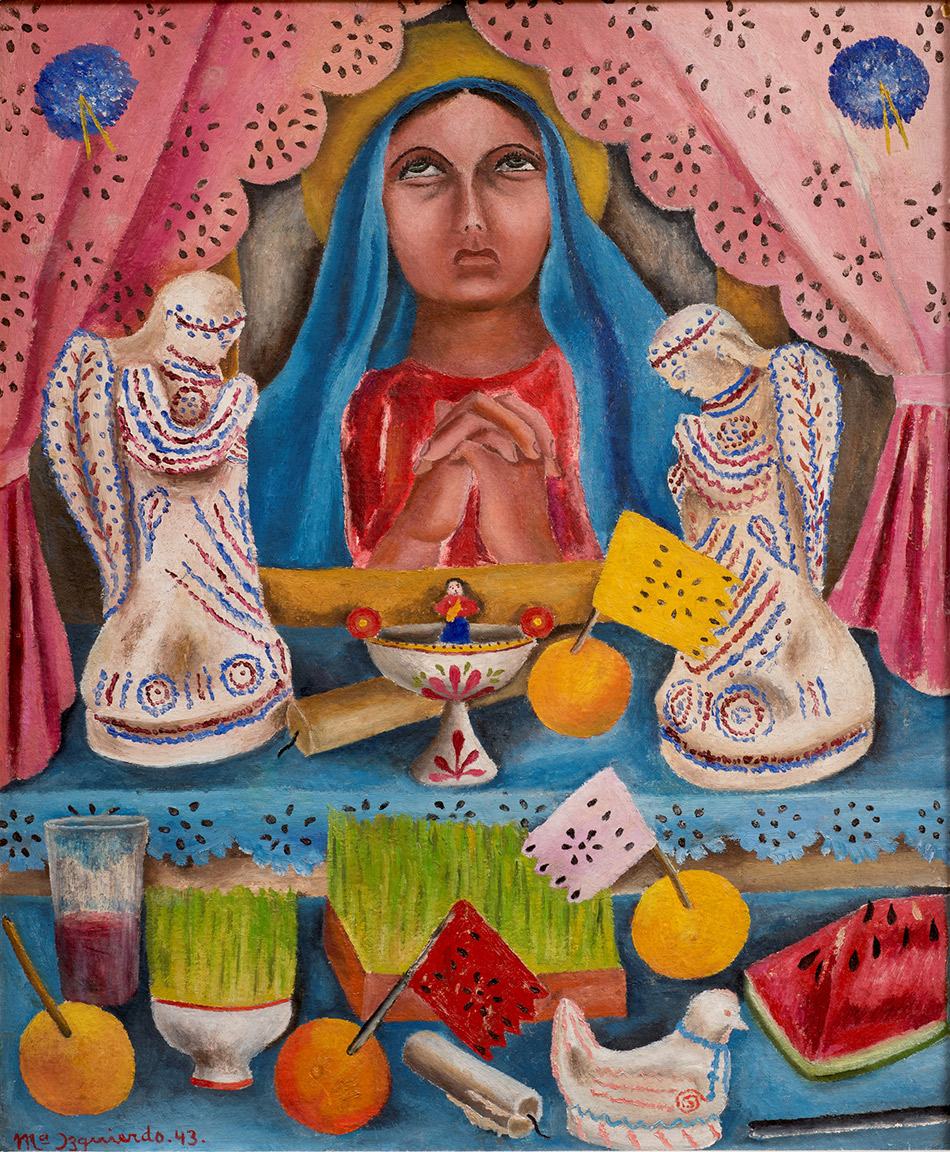 María Izquierdo, “Our Lady of Sorrows”, 1943, oil on board, private collection.
María Izquierdo, “Our Lady of Sorrows”, 1943, oil on board, private collection.
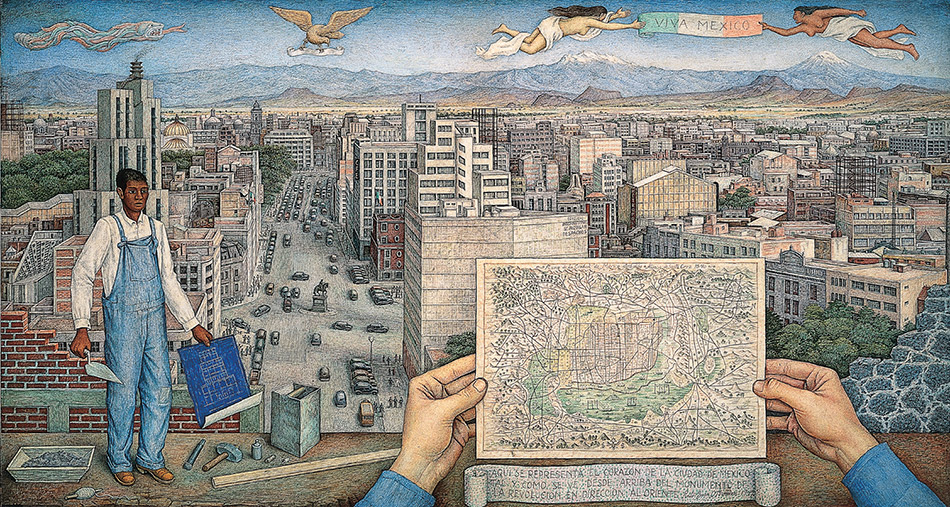 Juan O’Gorman, “Mexico City”, 1949, tempera on Masonite, Museo de Arte Moderno, INBA, Mexico City. © 2017 Artists Rights Society (ARS), New York / SOMAAP, Mexico City
Juan O’Gorman, “Mexico City”, 1949, tempera on Masonite, Museo de Arte Moderno, INBA, Mexico City. © 2017 Artists Rights Society (ARS), New York / SOMAAP, Mexico City
Photography
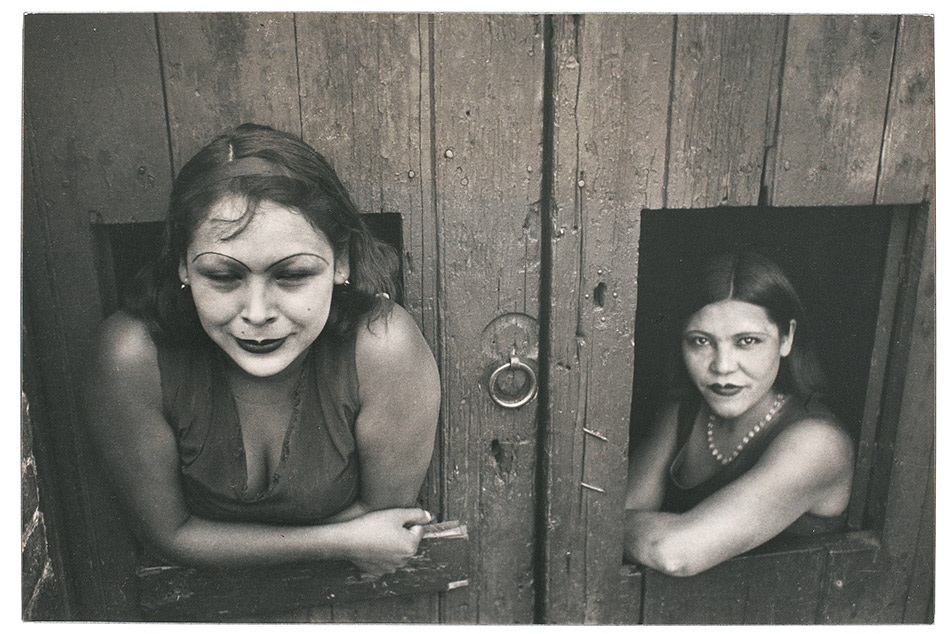 Henri Cartier-Bresson, “Calle Cuauhtemoctzin, Mexico City”, 1934, printed 1946, gelatin silver print, The Metropolitan Museum of Art, New York. Ford Motor Company Collection, gift of Ford Motor Company and John C. Waddell. © Henri Cartier-Bresson/ Magnum Photos
Henri Cartier-Bresson, “Calle Cuauhtemoctzin, Mexico City”, 1934, printed 1946, gelatin silver print, The Metropolitan Museum of Art, New York. Ford Motor Company Collection, gift of Ford Motor Company and John C. Waddell. © Henri Cartier-Bresson/ Magnum Photos
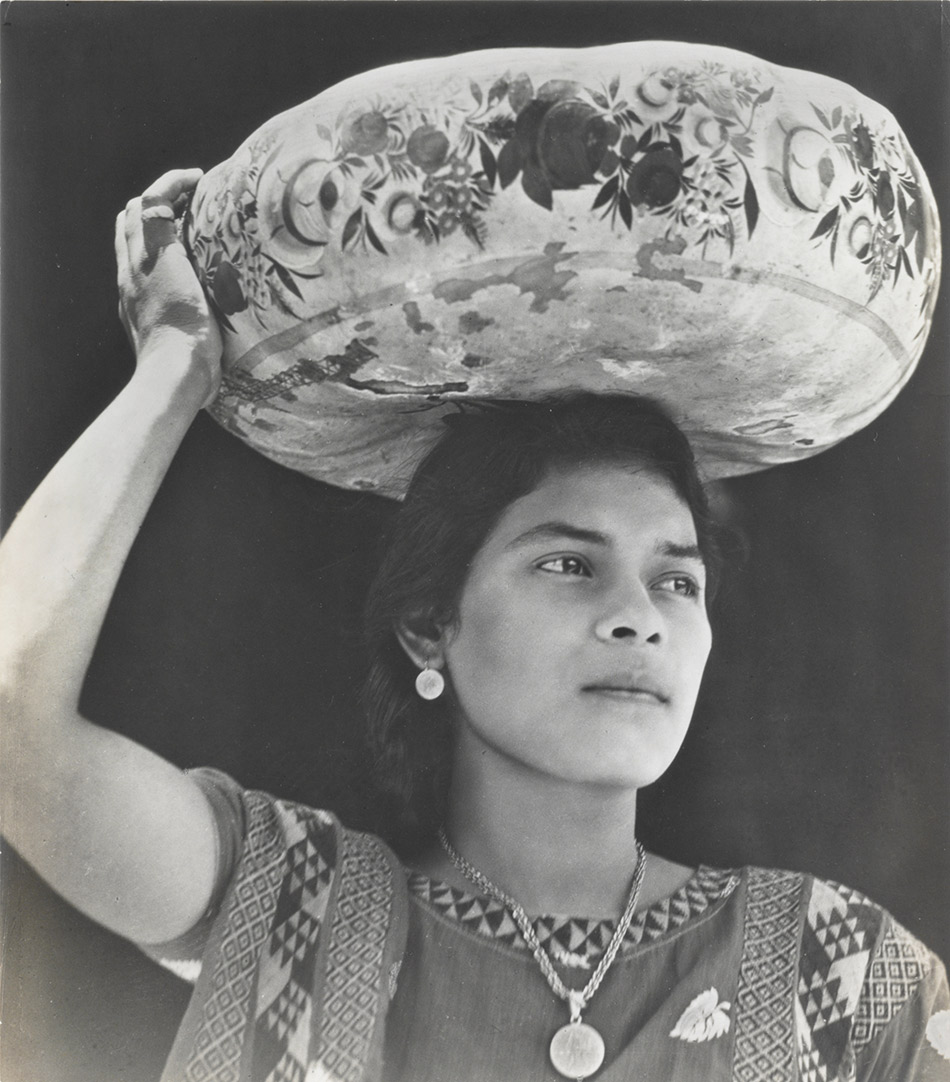 Tina Modotti, “Woman of Tehuantepec”, c. 1929, gelatin silver print, Philadelphia Museum of Art, gift of Mr. and Mrs. Carl Zigrosser.
Tina Modotti, “Woman of Tehuantepec”, c. 1929, gelatin silver print, Philadelphia Museum of Art, gift of Mr. and Mrs. Carl Zigrosser.
The most comprehensive exhibition of Modern Mexican art displayed
in the United States in more than 70 years
Modernism and “mexicanidad”
The exhibition opens with a group of works created in Mexico City during the revolutionary decade of the 1910s. While acknowledging international art movements such as Impressionism, Symbolism, and Cubism, artists at the time were increasingly interested in articulating a distinctly Mexican aesthetic—known as “mexicanidad”—in their work. Paintings such as Saturnino Herrán’s The Offering (1913), featuring a boatload of orange marigolds on its way to market for Day of the Dead offerings, reflect the desire to infuse art with symbols of national identity and traditions unique to Mexico.
Paint the Revolution
The context in which Mexican artists worked took a radical turn in the 1920s. A new government, led by President Álvaro Obregón, sought to unify citizens through public education and the arts, favoring the medium of mural painting in particular for its architectural, monumental, and communal qualities. Key works in the exhibition are supplemented by large-scale digital representations of three historic public murals: Rivera’s Ballad of the Agrarian and Proletarian Revolution (1928–29), on view at the Secretariat of Education in Mexico City; Orozco’s Epic of American Civilization (1939–40), on view at Dartmouth College in Hanover, New Hampshire; and Siqueiros’s Portrait of the Bourgeoisie (1939–40), painted for the electrician’s union headquarters in Mexico City.
The exhibition also highlights the effort of the Education Ministry to democratize culture, led by painter Adolfo Best Maugard (1891–1964), who established a drawing system for use in primary schools across Mexico City. Maugard’s influence is reflected in works by artists such as Abraham Ángel (1905–1924), Julio Castellanos (1905–1947), and Rufino Tamayo (1898–1991), who engaged with this educational project at a young age. Similarly, works created by young Modernists like Ramón Alva de la Canal (1892–1985), Manuel Rodríguez Lozano (1896–1971), and Leopoldo Méndez (1902–1969), who studied at Escuelas de Pintura al Aire Libre (Open-Air Painting Schools), are presented.
In the City
At the same time, in the 1920s, two groups of avant-garde artists emerged: the Estridentistas and the Contemporáneos. Attuned to international trends in painting, these groups rejected historical and traditional subjects in favor of cosmopolitan themes and scenes of everyday modern life. Images of cities, factories, and trains by Juan O’Gorman (1905–1982) and Rufino Tamayo; café scenes by Ramón Alva de la Canal; and a selection of photographs by Emilio Amero (1901–1976), Manuel Álvarez Bravo (1902–2002), and Augustín Jiménez (1901–1974), among others, reflect this urban focus.
Paint America
In the 1920s and 1930s, an emerging market for Mexican art in the United States drew painters like Frida Kahlo, José Clemente Orozco, and Diego Rivera northward. This section of the exhibition examines works generated by these prominent artists during multiyear sojourns in the United States. Often dramatizing the relationship between Hispano- and Anglo-America, these artists relied on imagery from both countries to tell a complete narrative of the continent’s history. Highlights include Kahlo’s Self-Portrait on the Border Line Between Mexico and the United States (1932); and Alfredo Ramos Martínez’s Pottery Vendors (1934), featuring representations of Mexican women drawn directly onto the beauty column of the Los Angeles Times.
In Times of War
Finally, the exhibition explores the resurgence of politically and socially charged art from the mid-1930s to the 1950s, as both national and international events continued to influence Mexican culture. As Mexican politics took a socialist turn, the end of the Spanish Civil War and World War II brought a number of exiled European artists to Mexico. Works in this section include Siqueiros’s War (1939), painted by the artist following his return from Spain, where he fought against the Fascists; and a selection of works by exiled artists of the Surrealist movement such as Wolfgang Paalen and Alice Rahon.
Statements
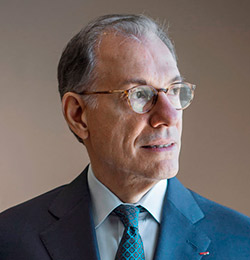 Gary Tinterow
Gary Tinterow
Director of the Museum of Fine Arts, Houston
“While some of the artists represented in Paint the Revolution may be familiar to visitors, many of the names and images will be new to Houston audiences. We are grateful to our colleagues at the Philadelphia Museum of Art and the Museo del Palacio de Bellas Artes for making this exhibition possible, and we are thrilled to offer visitors the opportunity to examine firsthand the emergence of Mexico as a center of Modern art,”
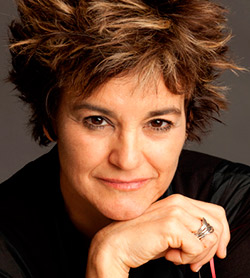 Mari Carmen Ramírez
Mari Carmen Ramírez
The Wortham Curator of Latin American Art at the MFAH
and organizing curator of the Houston presentation.
“Scholars have long understood Diego Rivera, José Clemente Orozco, and David Alfaro Siqueiros as the driving forces behind muralism and the transformations that swept Mexican art after the Revolution,” “Paint the Revolution, however, exposes audiences to the lesser-known forms of expression—from printmaking to photography—employed by a broad range of Mexican artists as they reacted to the social and political changes in Mexico during the first half of the 20th century.”
 Hong Ogle
Hong Ogle
Houston President of Bank of America.
“Bank of America is thrilled to sponsor and help bring Paint the Revolution to Houston,” “We share with the MFAH its mission of making art accessible to all. What better way to draw people of all backgrounds than with these masterpieces from some of Mexico’s most acclaimed artists. We believe that art matters. The arts help individuals connect with each other and across cultures. This exhibition is sure to be an enlightening part of Houston’s rich and diverse arts scene.”
CATALOGUE
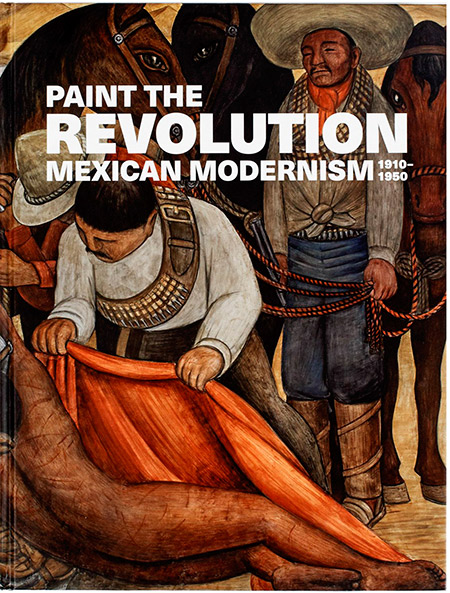
Paint the Revolution:
Mexican Modernism, 1910-1950
Hardcover 9 1/4″ x 11 3/4″
432 pages
350 color illustrations,
20 black and white illustrations
Yale University Press, 2016
ISBN-13: 978-0-87633-271-9
Printed in Spain
Price: $65.00
Member Price: $58.50
A comprehensive look at four transformative decades that put Mexico’s modern art on the map.
In the wake of the 1910–20 Revolution, Mexico emerged as a center of modern art, closely watched around the world. Highlighted are the achievements of the Tres grandes (three greats)—José Clemente Orozco, Diego Rivera, and David Alfaro Siqueiros—and other renowned figures such as Rufino Tamayo and Frida Kahlo, but the book goes beyond these well-known names to present a fuller picture of the period from 1910 to 1950.
Fourteen essays by authors from both the United States and Mexico offer a thorough reassessment of Mexican modernism from multiple perspectives. Some of the texts delve into thematic topics—developments in mural painting, the role of the government in the arts, intersections between modern art and cinema, and the impact of Mexican art in the United States—while others explore specific modernist genres—such as printmaking, photography, and architecture. This beautifully illustrated book offers a comprehensive look at the period that brought Mexico onto the world stage during a period of political upheaval and dramatic social change.
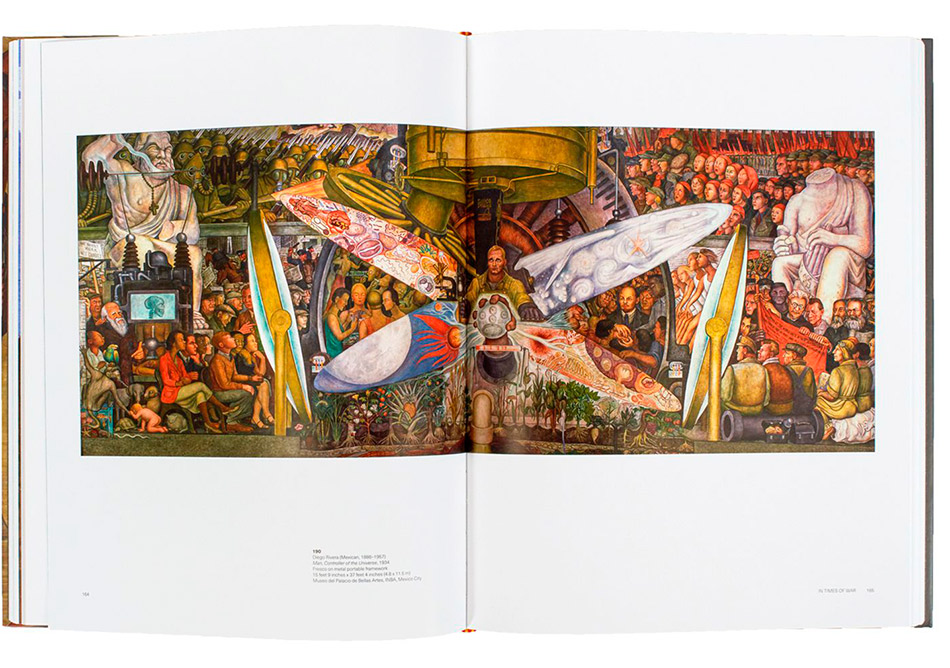
The accompanying catalogue in English and Spanish is made possible by the Mary Street Jenkins Foundation. The English language edition is additionally supported by the Davenport Family Foundation, The Andrew W. Mellon Fund for Scholarly Publications at the Philadelphia Museum of Art, and by Furthermore: a program of the J.M. Kaplan Fund.
Organizers
This exhibition was originated by the Philadelphia Museum of Art and the Museo del Palacio de Bellas Artes, Mexico City. The presentation in Houston was organized by the Museum of Fine Arts, Houston.
Project Team
Paint the Revolution was developed by Matthew Affron, The Muriel and Philip Berman Curator of Modern Art, Philadelphia Museum of Art; Renato González Mello, Director of the Instituto de Investigaciones Estéticas, Universidad Nacional Autónoma de México; Dafne Cruz Porchini, Postdoctoral Researcher, Colegio de México in Mexico City; and Mark A. Castro, Project Assistant Curator, Philadelphia Museum of Art. In Houston, the exhibition was overseen by Mari Carmen Ramírez, Wortham Curator of Latin American Art, Museum of Fine Arts, Houston.
SPONSORS
This project has been made possible in part by a major grant from the National Endowment for the Humanities: Exploring the human endeavor. This project is supported in part by an award from the National Endowment for the Arts.
BANK OF AMERICA is the National Sponsor of Paint the Revolution: Mexican Modernism, 1910–1950.
In Houston, the exhibition is also supported by:
H-E-B
Ignacio and Maria Isabel Torras
José Luis Barragán
The Honorable Oscar Rodriguez Cabrera, Consul General of Mexico
Celina Hellmund, Nina and Léon Brener-Hellmund
Mr. and Mrs. Greg Curran
Stephen and Johanna Donson
Linda and George Kelly
Trini and O.C. Mendenhall Foundation (Trini, Jan, and Oniel Mendenhall)
Cathy and Alex López Negrete
Ms. Silvia Salle
Daniela and Manolo Sánchez
Federica Simón de Andina
The MUSEUM OF FINE ARTS, HOUSTON
1001 Bissonnet, Houston, Texas 77005 Information Line 713.639.7300
https://www.mfah.org
